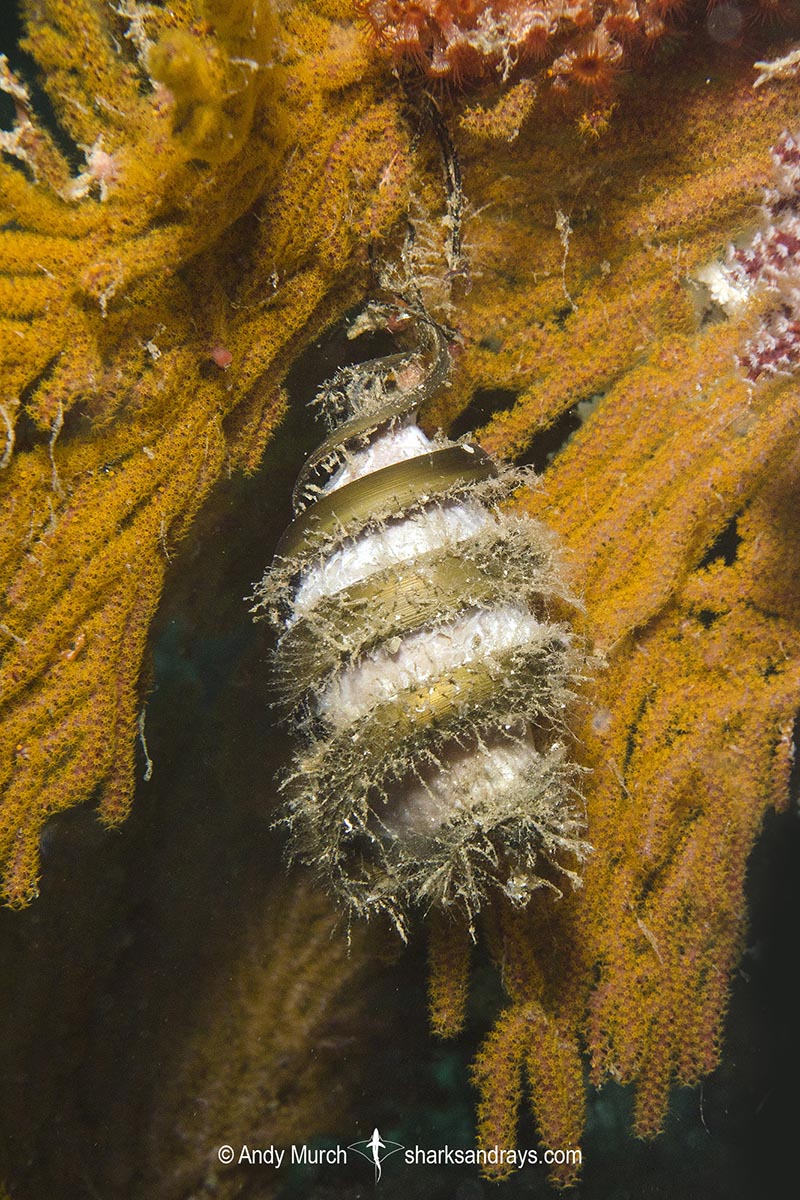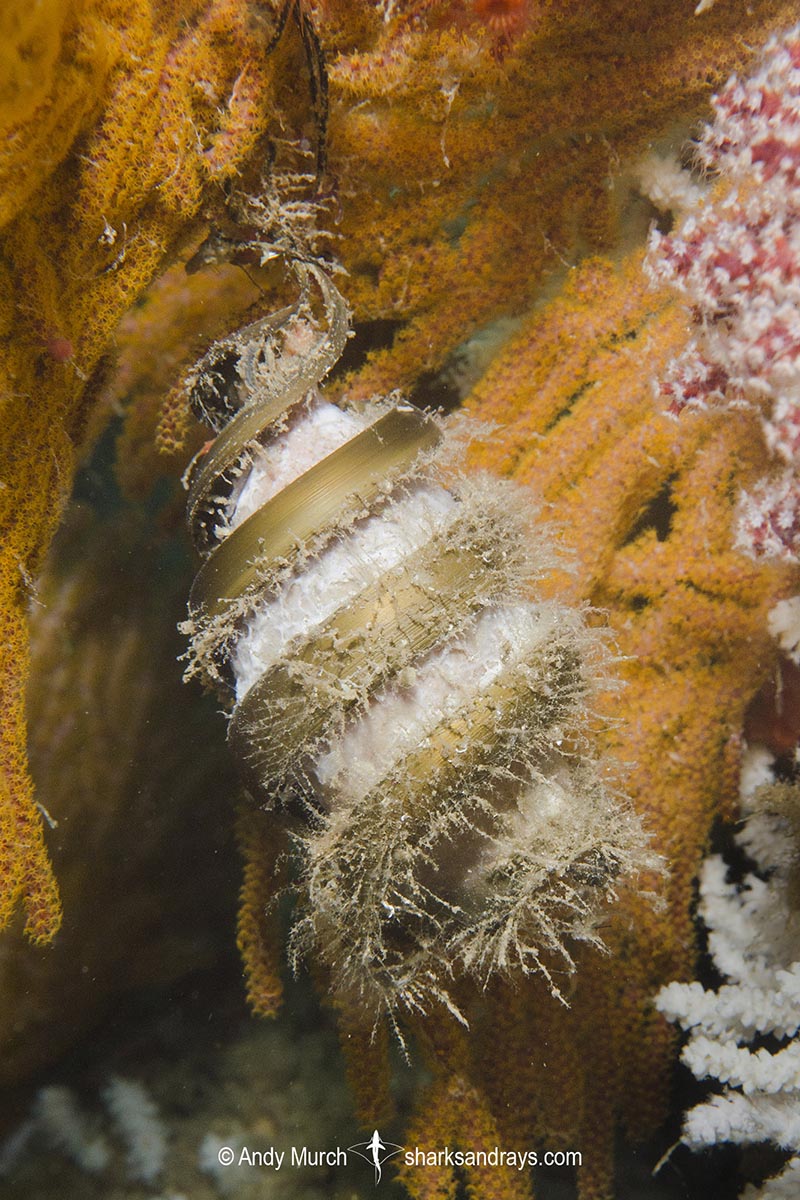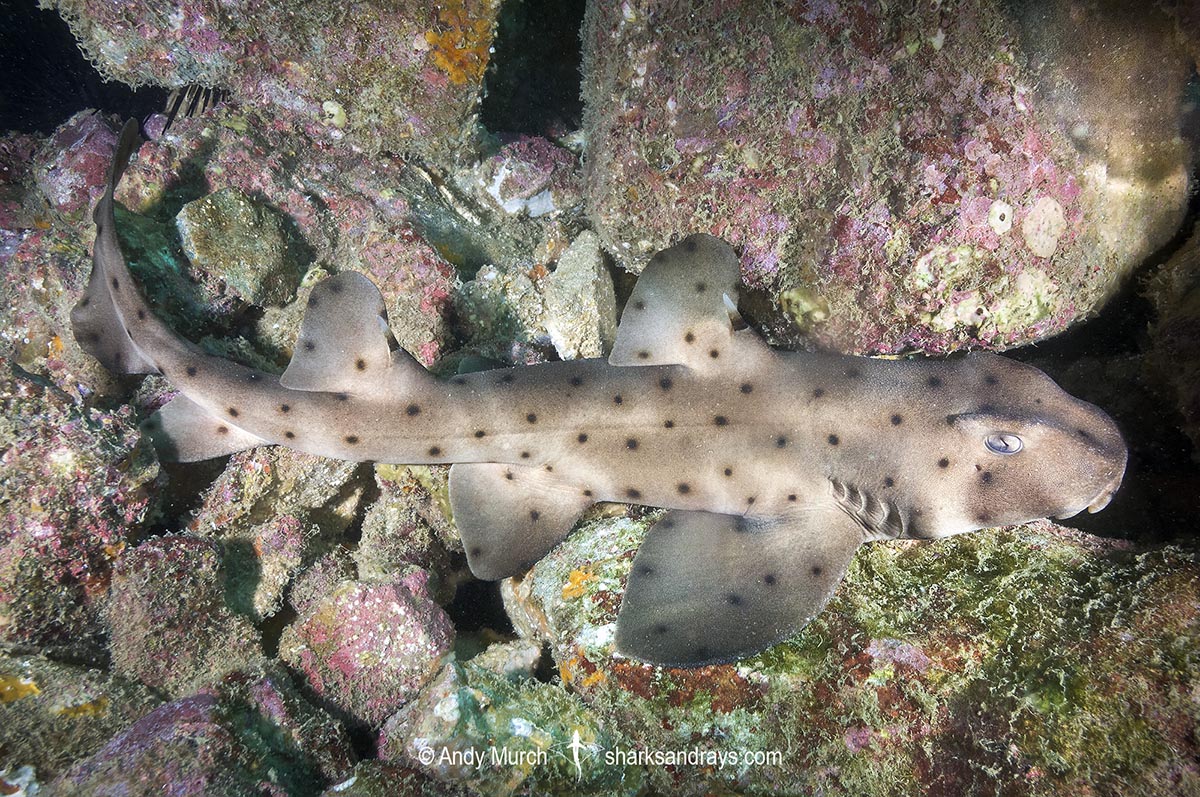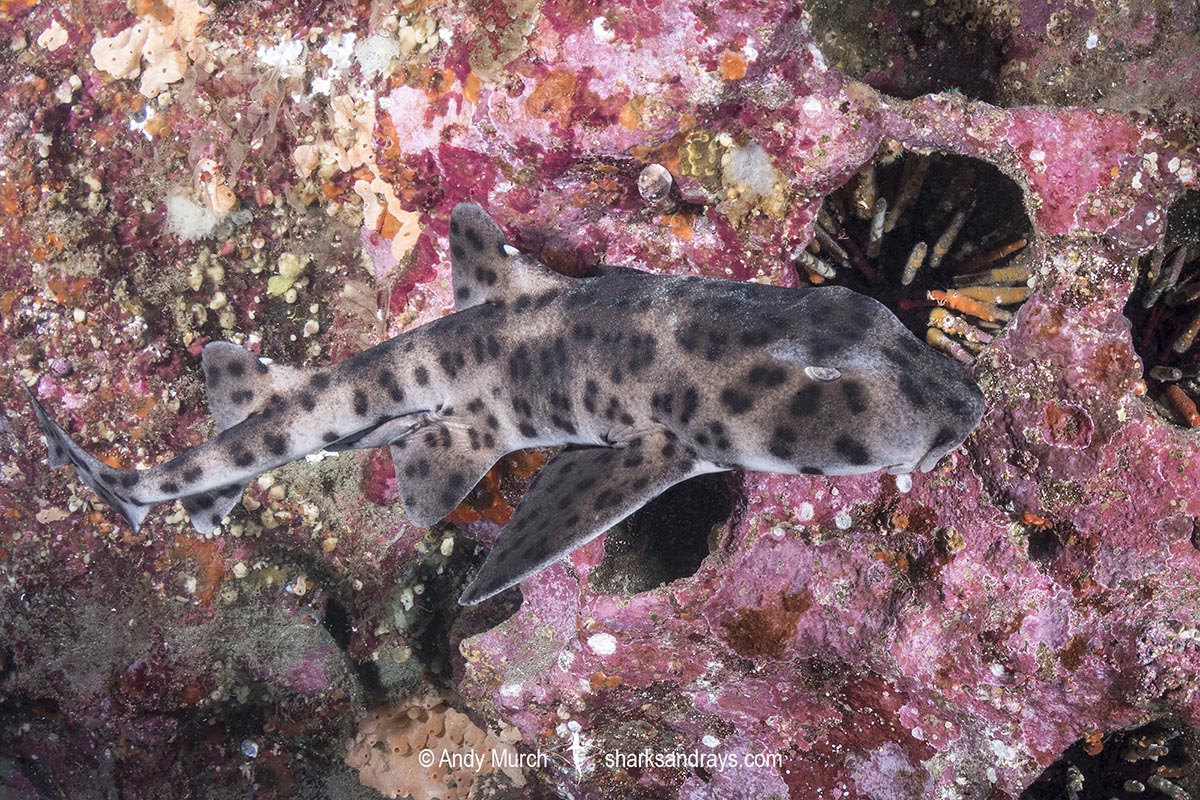Common name(s)
Mexican Horn Shark.
Binomial
Heterodontus mexicanus.
Synonyms
None.
Identification
Stout body. Blocky, buntly rounded head with relatively low brow ridges above eyes. Two dorsal fins, each with a spine at its origin. Small gap between dorsal spines and leading edge of dorsal fins. First dorsal fin origin over pectoral fin insertion. Second dorsal fin origin anterior to pelvic fin free rear tip. Pectoral fins much larger than first dorsal. Pelvic fins about the same size as first dorsal fin. High, short anal fin. Well developed caudal fin with square terminal lobe.
Dorsal coloration light greyish brown. Juveniles with sparsely scattered black spots that are half of eye diameter or bigger. Subtle pale vertical bar behind eye. Spots may be vague or absent on larger animals. Juveniles may have more prominent light and dark areas and more noticeable spots.
Size
Maximum length at least 70cm.
Habitat
Subtropical seas. Present on rocky terrain, coral reefs and sand. From inshore to at least 50m.
Distribution
The Mexican horn shark is found in the eastern Pacific from the Sea of Cortez, southern Mexico, Guatemala, Colombia and Panama and possibly Ecuador and Peru.

Conservation Status
DATA DEFICIENT
The Mexican hornshark has a low commercial value, but it is taken as bycatch in trawl, longline, and especially in gillnet fisheries. It is usually discarded and has a high post-release survival rate.

Reproduction
Oviparous. the Mexican horn shark lays auger shaped egg cases with short tendrils on the widest end. Cases measure 6-8cm in length. Egg cases may be found laying on the substrate, in crevices, or entangled on corals.
Although their installation has not been witnessed, Port Jackson Sharks in Australia have been documented holding their egg cases in their mouths and rotating their bodies to literally screw the eggs into cracks. It is possible that the Mexican horn shark employs a similar technique.
Diet
The Mexican horn shark consumes crustaceans (crabs) and bottom dwelling fishes.
Behavior
Poorly known.
Reaction to divers
Probably easy to approach. Most heterodontids remain motionless unless molested, at which point they usually retreat deeper into crevices or caves where possible.
Diving logistics
I have only come across the egg cases of this species. On multiple visits, I have seen egg cases suspended from corals in 25-40m on the wall at Coronado Island near Loreto in the Sea of Cortez.
I have heard that Mexican horn sharks are spotted fairly regularly on liveaboard dive trips to the Midriff Islands. During my only trip there, I spent a lot of time searching for this species but did not see any evidence of it.
Please email any recent information on sightings to sharkandrayinfo(at)gmail.com
What’s new
View our full list of updates
Similar species
Horn Shark Distinguished by smaller dark spots.
Galapagos Bullhead Shark Distinguished by bolder light and dark pattern and larger, more closely spaced black spots. Southeastern Pacific.




